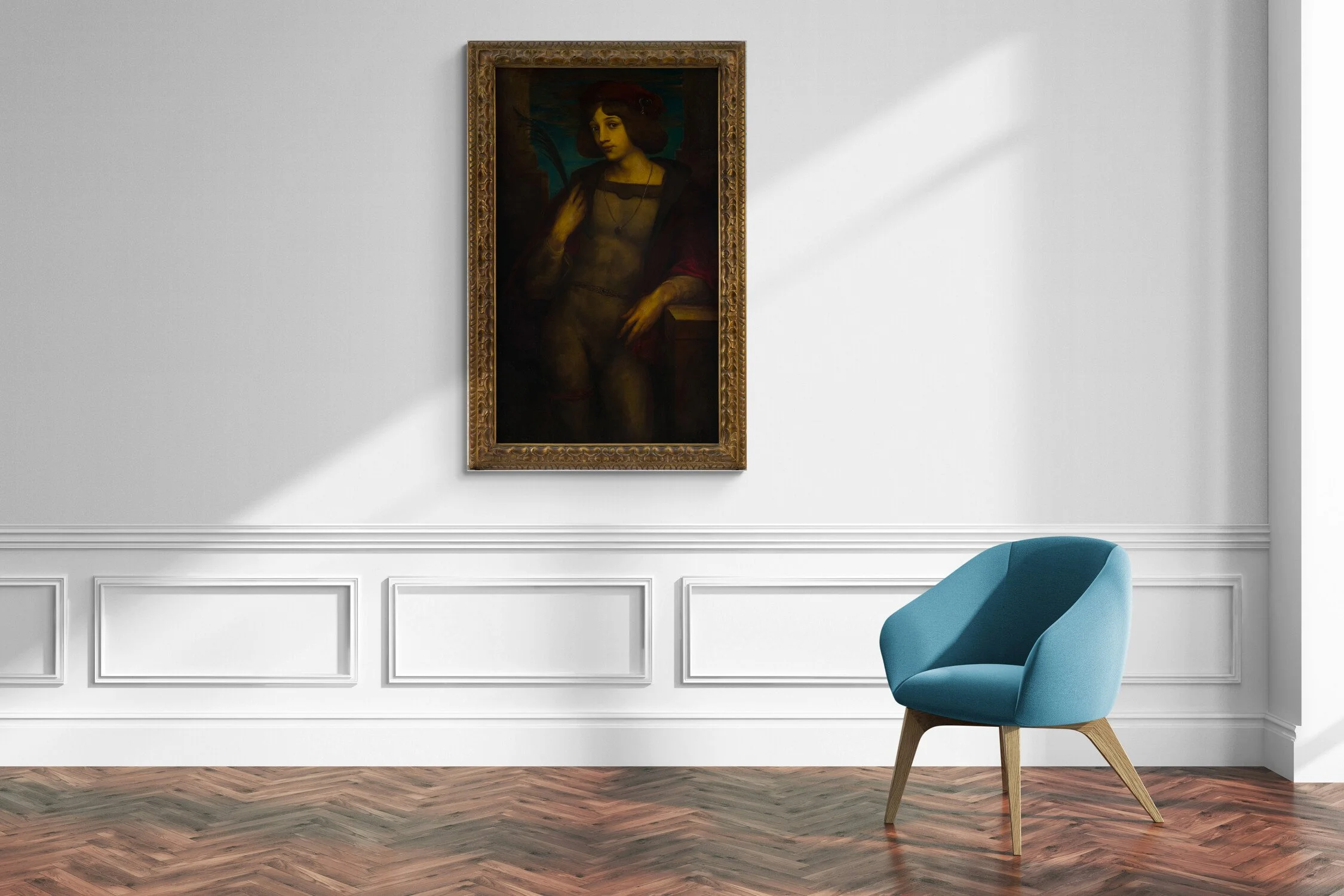
16th-19th Century
(attributed to) Léonard Sarluis, 'Portrait of a Young Man', c.1900
(attributed to) Léonard Sarluis, 'Portrait of a Young Man', c.1900
(attributed to) Léonard Sarluis, Dutch 1874-1949
Portrait of a Young Man, c.1900
POA
Oil on canvas
124cm x 73cm, (142cm x 91cm framed)
Born in The Hague, he studied at the Academy of Fine Arts between 1891 and 1893. During this time, he started to use “Léonard” as his first name, in reference to the great Leonardo Da Vinci. He exhibited for the first time in The Hague in 1894, creating often monumental paintings with mythological subjects. His emphasis on male nudes was very different from the paintings of his contemporaries.
From 1894, Sarluis regularly went to Paris where he continued his artistic training. He finally settled there in 1904. After his arrival in Paris, he quickly became a figure of the Parisian avant-garde movement and became close friends with Jean Lorrain who liked to say that Sarluis "had the smile of a Vinci, the eyes of Donna Ligeia, the neck of the Beatrice by Dante Gabriel Rossetti and the talent of Michelangelo”. His artistic production was deeply influenced by the Italian Renaissance and the English Pre-Raphaelite movement. He was also championed by Oscar Wilde, and is reported to be only one of 15 mourners at Wilde’s funeral in Paris.
